Blog
What Are The Basic Rules Of Cricket?
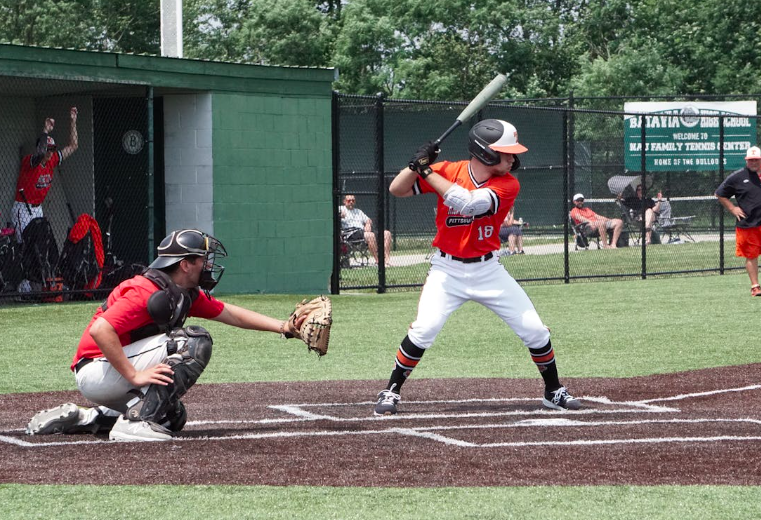
What Are The Basic Rules Of Cricket?
Cricket, often hailed as one of the most popular sports globally, is steeped in tradition and strategy. Played on an oval-shaped field, the game involves two teams, each aiming to score runs while simultaneously dismissing the opposing team’s batsmen. To navigate the complexities of cricket, it’s essential to grasp the fundamental rules governing the sport.
From the dynamics of batting and bowling to the intricacies of fielding and scoring, this guide delves into the basic rules that form the backbone of cricket’s rich tapestry. Whether you’re a seasoned fan or a newcomer to the sport, understanding these foundational principles is key to enjoying the game to its fullest.
The “Objective” In Cricket
In cricket, the objective for both teams is straightforward yet multi-faceted: to outscore their opponents by accumulating runs while batting and to dismiss the opposing team’s batsmen while fielding. Let’s break down the objective of cricket into its core components:
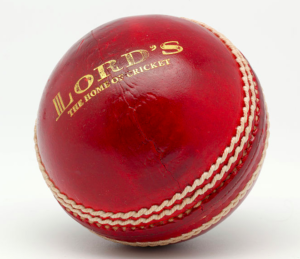
- Scoring Runs: The primary aim for the batting team is to score as many runs as possible within the allotted time or number of overs. Runs are scored by the batsmen hitting the ball and running between the wickets, or by hitting boundaries. Batsmen strive to strike a balance between aggression and defense to accumulate runs steadily while minimizing the risk of getting out.
- Building a Competitive Total: In longer formats of the game, such as Test matches or first-class cricket, teams aim to build a competitive total over multiple innings. This involves forming partnerships between batsmen, with each pair working together to accumulate runs and withstand the opposition’s bowling attack. A strong total gives the batting team a significant advantage and sets the stage for victory.
- Bowling Out the Opposition: While batting, the primary objective for the bowling and fielding team is to dismiss the opposing team’s batsmen as quickly and efficiently as possible. Bowlers employ a variety of techniques, including pace, swing, seam movement, and spin, to outsmart the batsmen and take wickets. Fielders play a crucial role in supporting the bowlers by catching the ball, stopping boundaries, and executing run-outs.
- Restricting Opposition’s Score: In limited-overs formats such as One Day Internationals (ODIs) and Twenty20 (T20) matches, teams aim to restrict the opposition’s score within a set number of overs. Bowlers focus on bowling tight lines and lengths to prevent the batsmen from scoring freely, while fielders position themselves strategically to cut off boundaries and create pressure.
- Adapting to Match Situations: Throughout the game, both teams must remain flexible and adapt their strategies based on the match situation. This includes adjusting batting orders, changing bowling tactics, and altering fielding placements to capitalize on weaknesses in the opposition’s lineup and exploit favorable conditions on the pitch.
Ultimately, the objective of cricket is to outperform the opposition in all facets of the game, including batting, bowling, and fielding, to secure victory. Success in cricket requires skill, strategy, teamwork, and the ability to capitalize on opportunities while minimizing risks.
The “Teams” In Cricket
In cricket, the concept of “teams” refers to the two competing groups of players involved in a match. Here’s an expanded explanation of the teams in cricket:
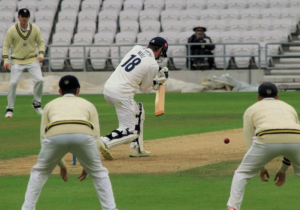
- Composition: Each cricket team consists of eleven players, including a combination of batsmen, bowlers, all-rounders, and a wicketkeeper. The players are selected based on their skills, expertise, and specialization in various aspects of the game.
- Batting and Bowling Lineup: Within a team, players are designated specific roles based on their strengths and abilities. Batsmen are responsible for scoring runs and building partnerships, while bowlers focus on delivering the ball with the aim of taking wickets. All-rounders contribute both with bat and ball, providing versatility to the team’s lineup.
- Fielding Positions: When the opposing team is batting, the fielding team strategically positions its players around the field to maximize their chances of taking wickets and preventing runs. Fielders are positioned in various locations, such as slips, gully, point, cover, mid-off, mid-on, square leg, fine leg, and deep positions on the boundary, based on the bowler’s strategy and the batsman’s tendencies.
- Team Captaincy: Each team is led by a captain, who is responsible for making strategic decisions, such as setting fielding placements, rotating bowlers, and making batting order adjustments. The captain plays a pivotal role in guiding the team’s performance and fostering a cohesive and competitive spirit among the players.
- Support Staff: In addition to the players and captain, cricket teams often have a support staff comprising coaches, physiotherapists, analysts, and other personnel who provide guidance, training, and assistance to enhance the team’s performance and well-being.
- Team Dynamics: Successful cricket teams exhibit strong teamwork, communication, and camaraderie among players. Effective communication and collaboration are essential for executing game plans, adapting to changing match situations, and maintaining morale and confidence throughout the match.
Overall, the concept of “teams” in cricket represents the collective effort of players working together to achieve common goals, compete against the opposition, and uphold the spirit and traditions of the game. Each player contributes uniquely to the team’s success, and teamwork is essential for achieving victory in cricket matches.
The “Innings” In Cricket
In cricket, an “innings” refers to the period during which one team bats and the other team fields. Here’s a detailed explanation of innings in cricket:
- Two Innings per Match: In most forms of cricket, including Test matches and first-class cricket, each match consists of two innings for each team. This means that both teams have the opportunity to bat and bowl twice during the course of the match.
- Batting Innings: During a batting innings, the members of the batting team take turns to bat in pairs, with two batsmen on the field at any given time. The objective of the batting team is to score as many runs as possible while minimizing the number of wickets lost. A batsman continues to bat until he is dismissed (gets out) or the team’s innings is declared closed by the captain.
- Bowling and Fielding Innings: While the batting team is scoring runs, the opposing team takes on the roles of bowling and fielding. The bowling team consists of bowlers who deliver the ball to the batsmen, while the fielding team positions its players around the field to stop runs and take wickets. The fielding team aims to dismiss the batting team’s batsmen as quickly as possible and restrict their scoring opportunities.
- Change of Innings: After the completion of the first innings by one team, there is a change of innings, and the roles are reversed. The team that batted first now fields, and the team that fielded first now bats. This ensures fairness and balance in the match, as both teams have the opportunity to bat and bowl under similar conditions.
- Follow-on: In longer formats of the game, such as Test matches, if the team batting second fails to score a specified percentage of the runs scored by the team batting first (usually 200 runs), the team batting first may enforce the follow-on. This means that the team batting second is asked to bat again immediately after their first innings, without the need for the team batting first to bat again.
- Declaration: In certain situations, the captain of the batting team may declare the team’s innings closed before all the batsmen are dismissed. This typically occurs when the batting team has scored a substantial total and wishes to give its bowlers more time to dismiss the opposing team’s batsmen and win the match.
Overall, the concept of innings in cricket is central to the structure of the game, providing both teams with equal opportunities to bat and bowl, and contributing to the strategic and tactical dynamics of the match.
The “Batting” In Cricket
Batting is one of the fundamental aspects of cricket, where players from the batting team attempt to score runs against the bowling and fielding efforts of the opposing team. Here’s an in-depth look at batting in cricket:
- Batsman’s Role: A batsman’s primary role is to score runs for their team by hitting the ball delivered by the bowler. Batsmen aim to accumulate runs individually and in partnerships with their fellow batsmen while facing deliveries from the opposition bowlers.
- Batsman’s Equipment: Batsmen use a cricket bat to hit the ball. The bat typically consists of a flat blade attached to a handle. Batsmen also wear protective gear, including helmets, pads, gloves, and thigh guards, to safeguard themselves against injury from the hard cricket ball.
- Batting Stance and Technique: Batsmen adopt a specific stance at the crease before facing each delivery. This stance varies depending on factors such as the bowler’s delivery style, pitch conditions, and the batsman’s individual preference. Batsmen employ various batting techniques, including front-foot and back-foot strokes, to effectively respond to different types of deliveries.
- Scoring Runs: Batsmen score runs by hitting the ball and running between the wickets, exchanging positions with their batting partner. They can also score runs by hitting boundaries, which include four runs for the ball reaching the boundary rope after touching the ground and six runs for the ball clearing the boundary without touching the ground.
- Getting Out: Batsmen can be dismissed (get out) in several ways, including being bowled (the ball hits the stumps and dislodges the bails), caught (the ball is caught by a fielder without touching the ground), LBW (Leg Before Wicket, where the ball would have hit the stumps but was obstructed by the batsman’s leg), run out (a fielder hits the stumps with the ball while the batsman is running between the wickets), and stumped (the wicketkeeper removes the bails while the batsman is out of his crease).
- Batting Order: The batting order determines the sequence in which batsmen from the batting team come to bat. The team’s best batsmen typically bat at the top of the order, followed by middle-order batsmen and lower-order batsmen, who may also be proficient bowlers.
- Building Partnerships: Batsmen aim to build partnerships with their batting partners to stabilize the team’s innings and accumulate runs consistently. Effective communication, understanding, and support between batting partners are crucial for building successful partnerships.
- Adapting to Conditions: Batsmen must adapt their batting approach based on various factors, including pitch conditions, weather conditions, the state of the match, and the quality of the opposition’s bowling attack. Adjusting batting techniques and strategies accordingly is essential for success in different situations.
Overall, batting in cricket requires skill, concentration, patience, and adaptability. Batsmen play a pivotal role in determining the outcome of matches and are responsible for setting competitive totals or chasing down targets to secure victory for their team.
The “Bowling” In Cricket
Bowling is a critical aspect of cricket, where players from the fielding team deliver the ball to the batsmen with the aim of dismissing them and restricting their scoring opportunities. Here’s an in-depth look at bowling in cricket:
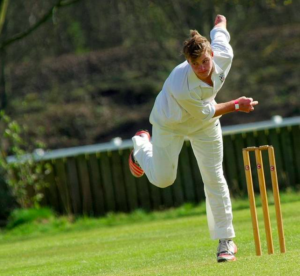
- Bowler’s Role: A bowler’s primary role is to deliver the cricket ball to the batsman with the intention of taking wickets and preventing runs. Bowlers employ various techniques, such as pace, swing, seam movement, and spin, to outsmart the batsmen and induce mistakes.
- Types of Bowlers: There are several types of bowlers in cricket, each specializing in different styles of bowling. These include:
- Fast Bowlers: Known for their ability to deliver the ball at high speeds, fast bowlers aim to intimidate batsmen with sheer pace and bounce.
- Medium Pace Bowlers: Medium pace bowlers deliver the ball at a moderate speed, combining variations in pace and movement to deceive batsmen.
- Spin Bowlers: Spin bowlers impart spin on the ball, causing it to deviate off the pitch after bouncing. Spinners include off-spinners, who turn the ball away from the batsman, and leg-spinners, who turn the ball into the batsman.
- Bowling Action: Each bowler has a unique bowling action, comprising the sequence of movements they perform while delivering the ball. A smooth and repeatable bowling action is essential for generating pace, swing, and spin effectively while minimizing the risk of injury.
- Bowling Strategy: Bowlers develop strategic plans to outsmart the batsmen and take wickets. This includes targeting the batsmen’s weaknesses, exploiting pitch conditions, setting field placements to create pressure, and using variations in pace and trajectory to keep batsmen guessing.
- Taking Wickets: The primary objective of bowling is to dismiss batsmen and take wickets. Bowlers can get batsmen out in various ways, including:
- Bowled: The ball hits the stumps and dislodges the bails.
- Caught: The batsman hits the ball, and it is caught by a fielder without touching the ground.
- LBW (Leg Before Wicket): The ball would have hit the stumps but was obstructed by the batsman’s leg.
- Run Out: A fielder hits the stumps with the ball while the batsman is running between the wickets.
- Stumped: The wicketkeeper removes the bails while the batsman is out of his crease.
- Economy Rate: In addition to taking wickets, bowlers aim to maintain a low economy rate by restricting the opposing team’s scoring opportunities. Economy rate is calculated as the average number of runs conceded per over bowled.
Overall, bowling in cricket requires skill, precision, control, and tactical awareness. Bowlers play a crucial role in determining the outcome of matches and are integral to their team’s success in both defending and chasing targets.
The “Fielding” In Cricket
Fielding is a vital aspect of cricket, encompassing a range of skills and techniques aimed at preventing runs, taking catches, and effecting run-outs. Here’s an in-depth look at fielding in cricket:
- Fielding Positions: Fielders are strategically positioned around the field to maximize their ability to stop runs and take catches. Common fielding positions include:
- Slips: Positioned close to the wicketkeeper, slips fielders are placed to catch edges from the batsman’s bat.
- Gully: Located beside the slips, the gully fielder is positioned to catch deflections off the bat.
- Point: Positioned on the off-side behind square, point fielders cover the region between backward point and cover.
- Cover: Cover fielders cover the off-side region between point and mid-off, aiming to cut off drives and pushes.
- Mid-off and Mid-on: Located straight in front of the batsman, mid-off and mid-on fielders are positioned to field drives and lofted shots.
- Square Leg and Fine Leg: Positioned on the leg-side, square leg and fine leg fielders cover the region behind square leg and fine leg respectively.
- Deep Positions: Fielders positioned on the boundary, such as deep backward square leg, deep mid-wicket, and long-off, aim to prevent boundary shots.
- Catching: Fielders attempt to catch the ball after it has been hit by the batsman. Catches can be taken in various positions, including close to the wicket, in the outfield, or on the boundary. A successful catch results in the dismissal of the batsman.
- Ground Fielding: Fielders aim to prevent runs by stopping the ball and returning it quickly to the wicketkeeper or bowler. Ground fielding techniques include sliding to stop the ball, diving to intercept shots, and throwing accurately to the wicketkeeper or fielder.
- Throwing: Fielders must possess strong throwing skills to accurately return the ball to the wicketkeeper or bowler. Quick and accurate throws are essential for preventing runs and executing run-outs.
- Run-Outs: Fielders can dismiss batsmen by hitting the stumps with the ball while the batsman is attempting to complete a run. Run-outs require quick reflexes, accurate throws, and effective communication between fielders.
- Back-Up Fielding: Fielders positioned behind the primary fielder provide support by backing up throws and anticipating deflections. Back-up fielders aim to prevent overthrows and ensure the ball remains under control.
- Specialist Fielders: Some players excel in specific fielding positions and are designated as specialist fielders. These players are often stationed in key positions where their fielding expertise can make a significant impact on the game.
Overall, fielding in cricket requires agility, athleticism, anticipation, and teamwork. Effective fielding can contribute to the success of a team by restricting runs, taking wickets, and maintaining pressure on the opposition batsmen.
The “Dismissals” In Cricket
Dismissals in cricket refer to the various ways in which a batsman can be legally removed from the field of play, ending their innings. Here’s an in-depth look at the different types of dismissals in cricket:
- Bowled (B): If the bowler delivers the ball, and it hits the stumps, dislodging the bails, the batsman is considered bowled out. This can occur if the ball strikes the stumps directly or after hitting the batsman’s body or bat.
- Caught (C): If a fielder catches the ball on the full (without it touching the ground) after the batsman has struck it with their bat or glove, the batsman is dismissed as caught. The catch must be completed cleanly, and the fielder must have full control of the ball.
- LBW (Leg Before Wicket): If the ball strikes the batsman’s leg (or any part of the body in line with the stumps), and the umpire deems that it would have gone on to hit the stumps had it not been obstructed by the batsman, the batsman is given out LBW.
- Run Out (RO): A batsman can be run out if, while attempting to complete a run, they fail to reach the crease before the stumps are broken by a fielder’s throw. This typically occurs when the ball is hit into the field, and the batsmen attempt to run between the wickets.
- Stumped (St): If the batsman leaves their crease to play a delivery, misses the ball, and the wicketkeeper subsequently breaks the stumps with the ball, the batsman is stumped out. This dismissal requires the wicketkeeper to gather the ball and dislodge the bails while the batsman is out of their crease.
- Hit Wicket (HW): If, while attempting to play a delivery, the batsman accidentally dislodges the bails with their bat or body, the batsman is out hit wicket. This can occur if the batsman’s momentum carries them into the stumps, or if they accidentally strike the stumps with their bat.
- Handled the Ball (HB): If a batsman deliberately touches the ball with a hand that is not holding the bat, without the consent of the fielding side, the umpire may rule the batsman out for handling the ball.
- Obstructing the Field (O): If a batsman deliberately obstructs the fielding side by word or action, the umpire may rule the batsman out for obstructing the field.
- Retired Out (Retired): A batsman may retire out voluntarily, typically due to injury or illness, with the consent of the opposing captain. However, if the batsman retires without the opposing captain’s consent, they may not resume their innings.
These are the various ways in which a batsman can be dismissed in cricket, each contributing to the ebb and flow of the game and the battle between bat and ball.
The “Scoring” In Cricket
Scoring in cricket refers to the process by which runs are accumulated by the batting team during their innings. Here’s an in-depth look at scoring in cricket:
- Runs: The primary objective of the batting team is to score runs by hitting the ball with the bat and running between the wickets. Runs are awarded based on the distance the batsmen cover while running between the creases, as well as by hitting the ball to the boundary rope.
- Running Between the Wickets: Batsmen score runs by running between the creases at either end of the pitch. Each time both batsmen safely reach the opposite crease, one run is added to the team’s total. Batsmen can score multiple runs per delivery by running back and forth between the creases.
- Boundaries: When the batsman hits the ball to the boundary rope without it touching the ground, the batting team is awarded additional runs. The number of runs awarded depends on where the ball crosses the boundary:
- Four Runs: If the ball crosses the boundary after bouncing on the ground, four runs are awarded to the batting team.
- Six Runs: If the ball crosses the boundary without bouncing on the ground, six runs are awarded, commonly known as a “six”.
- Extras: In addition to runs scored by the batsmen, the bowling team may concede extras, which are added to the batting team’s total. Extras include:
- No Ball: If the bowler oversteps the crease while delivering the ball, a no ball is called, and one run is added to the batting team’s score.
- Wide: If the bowler delivers a ball that is too wide for the batsman to reach, a wide is called, and one run is added to the batting team’s score.
- Bye: If the ball passes the batsman without being hit and the batsmen run between the wickets, the batting team is awarded runs as byes.
- Leg Bye: If the ball hits the batsman’s body or equipment and the batsmen run between the wickets, the batting team is awarded runs as leg byes.
- Scoring Methods: Batsmen use various methods to score runs, including:
- Defensive Shots: Batsmen can defend the ball to protect their wicket while looking for scoring opportunities.
- Attacking Shots: Batsmen can play attacking shots to score runs quickly, including drives, cuts, pulls, sweeps, and lofted shots.
- Running Between Wickets: Batsmen must communicate and judge runs quickly to maximize scoring opportunities while minimizing the risk of being run out.
- Scoreboard: The scoreboard displays the batting team’s total runs, wickets lost, and overs bowled. It provides real-time updates on the progress of the innings, allowing players and spectators to track the match’s development.
Overall, scoring in cricket is a dynamic and strategic aspect of the game, requiring skill, decision-making, and teamwork from the batting team to accumulate runs and set competitive totals.
Conclusion
In conclusion, cricket is a multifaceted sport that encompasses a wide range of skills, strategies, and tactics. From batting and bowling to fielding and scoring, every aspect of the game contributes to its rich and dynamic nature.
Whether it’s the elegance of a cover drive, the precision of a well-directed yorker, or the athleticism of a diving catch, cricket captivates fans around the world with its blend of athleticism, strategy, and sportsmanship. As players strive for excellence on the field, cricket continues to evolve, bringing joy, excitement, and camaraderie to players and spectators alike.

Blog
Wrestler Dakota Kai Biography and Net Worth

Wrestler Dakota Kai Biography and Net Worth
Dakota Kai, known for her electrifying charisma and unparalleled wrestling style, has carved a remarkable niche in the world of professional wrestling. From her beginnings in New Zealand to her rise in WWE, Dakota has inspired fans worldwide with her story of passion, grit, and perseverance. In this comprehensive biography, we will explore Dakota Kai’s journey, wrestling achievements, personal life, and her estimated net worth.
Who Is Dakota Kai?
Dakota Kai, born Cheree Georgina Crowley on May 6, 1988, in Auckland, New Zealand, is a professional wrestler currently signed to WWE’s Raw brand. Known for her athleticism and technical prowess, Dakota has become one of the most beloved figures in women’s wrestling.
Her rise from a small wrestling scene in New Zealand to competing on a global stage is a testament to her dedication and talent.
Early Life and Inspiration
Childhood in New Zealand
Dakota grew up in a close-knit family in Auckland. Her Samoan heritage played a significant role in shaping her identity and instilled a sense of resilience and community spirit. Her childhood was filled with sports, particularly soccer, where she honed her agility and teamwork skills.
The Influence of Wrestling
Dakota’s love for wrestling was ignited by watching icons such as Trish Stratus and Lita. These legends inspired her to pursue a career in professional wrestling despite the limited opportunities in New Zealand.
The Beginnings of Dakota Kai’s Wrestling Career
Debut in New Zealand
Dakota started her professional wrestling journey in 2007 with the Impact Pro Wrestling (IPW) promotion in New Zealand. Wrestling under the ring name “Evie,” she quickly became a standout performer known for her dynamic energy and technical skill.
International Exposure
After dominating the New Zealand wrestling scene, Dakota set her sights on international opportunities. Her performances in Shimmer Women Athletes and Pro Wrestling Alliance Australia earned her recognition, leading to invitations to compete in Japan’s renowned Joshi wrestling scene.
Breakthrough with WWE
Signing with WWE
In 2016, Dakota Kai signed with WWE, joining the NXT roster. Her debut under the WWE banner marked a pivotal moment in her career as she transitioned from an independent circuit star to a global phenomenon.
Notable Matches and Rivalries
- Mae Young Classic (2017): Dakota gained widespread attention during this tournament, showcasing her talent against some of the best female wrestlers worldwide.
- Feuds with Shayna Baszler: Her battles with Baszler highlighted Dakota’s underdog spirit, earning her a loyal fanbase.
- Alliance with Raquel Rodriguez: Their partnership led to multiple memorable moments, including winning the NXT Women’s Tag Team Championship.
Signature Moves and Wrestling Style

Dynamic Wrestling Arsenal
Dakota Kai is celebrated for her innovative and high-impact wrestling style. Some of her signature moves include:
- Kai-Ropractor: A devastating backbreaker that demonstrates her technical skill.
- Running Yakuza Kick: Often delivered with unparalleled precision, this move is a crowd favorite.
Adaptability in the Ring
Her ability to adapt her style based on her opponent makes Dakota a versatile competitor, equally skilled in striking, submissions, and aerial maneuvers.
Dakota Kai’s Transition to the Main Roster
In 2022, Dakota made her official debut on WWE’s main roster as part of the Damage CTRL faction, led by Bayley. This transition allowed her to reach a wider audience, and she quickly became a prominent figure on WWE’s flagship shows.
Achievements on the Main Roster
- WWE Women’s Tag Team Champion: Dakota and her Damage CTRL partner, IYO SKY, have captured the title multiple times.
- Memorable matches on WrestleMania and SummerSlam stages.
Personal Life
Off-Screen Interests
Dakota Kai is known for her love of gaming and streaming. She regularly interacts with fans through platforms like Twitch, where she showcases her personality beyond the wrestling ring.
Philanthropic Efforts
Dakota is an advocate for mental health awareness, often using her platform to promote positivity and support for those struggling.
Net Worth of Dakota Kai
Estimated Earnings
As of 2024, Dakota Kai’s net worth is estimated to be around $2 million, derived from various income streams:
- WWE Contract: Her primary source of income includes salary, bonuses, and merchandise royalties.
- Endorsements and Appearances: Dakota has partnered with several brands, further bolstering her earnings.
- Streaming and Sponsorships: Her gaming streams add an additional revenue stream.
Comparison with Other Wrestlers
While not yet among the highest-paid WWE superstars, Dakota’s growing popularity and continued success suggest a bright financial future.
Impact on Women’s Wrestling
Dakota Kai has played a significant role in advancing women’s wrestling. Her performances have inspired aspiring wrestlers, particularly in regions like New Zealand, where professional wrestling opportunities are limited.
Future Aspirations
Dakota’s journey is far from over. Fans eagerly await her next career milestones, whether it’s a singles championship reign or more groundbreaking moments in WWE.
Conclusion
Dakota Kai’s story is one of perseverance, talent, and a deep love for professional wrestling. From her beginnings in New Zealand to becoming a global sensation, she continues to captivate audiences with her skill and personality. Her impact on wrestling and her fans is undeniable, and her future in the industry looks incredibly promising.
Frequently Asked Questions (FAQs)
What is Dakota Kai’s real name?
Dakota Kai’s real name is Cheree Georgina Crowley.
When did Dakota Kai debut in WWE?
Dakota Kai made her WWE debut in 2016 under the NXT brand.
3. What championships has Dakota Kai won?
Dakota has won the NXT Women’s Tag Team Championship and the WWE Women’s Tag Team Championship.
4. What is Dakota Kai’s wrestling style?
Dakota’s style combines striking, technical maneuvers, and aerial agility, making her a versatile competitor.
5. Where can I watch Dakota Kai’s matches?
Her matches are available on WWE Network, Peacock, and other WWE programming like Monday Night Raw.
Blog
Carmella Biography and Net Worth: Uncovering the Life and Wealth of WWE’s Star

Carmella Biography and Net Worth: Uncovering the Life and Wealth of WWE’s Star
Leah Van Dale, famously known as Carmella, is a prominent figure in the world of wrestling, specifically under WWE’s SmackDown roster. Known for her charisma, agility, and a remarkable mix of beauty and brawn, Carmella has captured fans’ attention worldwide. With a career that spans various disciplines, from dancing and modeling to professional wrestling, Carmella’s journey is one of ambition, hard work, and resilience. In this comprehensive biography, we’ll explore her early life, career, personal life, and net worth to give a full picture of Carmella’s path to success.
Early Life and Background
Humble Beginnings in Massachusetts
Born on October 23, 1987, in Spencer, Massachusetts, Leah Van Dale came from a modest background, instilled with values of discipline and perseverance. Her father, Paul Van Dale, a former wrestler and mixed martial artist, introduced her to the world of wrestling. This early influence from her father sparked Carmella’s interest in the sport, providing her with an understanding of the challenges of a wrestling career.
Education and Early Ambitions
Leah attended the University of Massachusetts Dartmouth, majoring in marketing. During college, her ambitions stretched beyond academics, as she sought to make her mark in the entertainment industry. From a young age, Leah was involved in cheerleading and dancing, pursuits that would eventually shape her career path.
Carmella’s Road to WWE
Transition from Cheerleading to Wrestling
Before wrestling, Leah made her way into the world of cheerleading and professional dancing. She performed as an NFL cheerleader for the New England Patriots from 2008 to 2010 and later joined the Los Angeles Lakers as a dancer. This exposure gave her experience in showmanship and built her confidence, setting the foundation for her future wrestling career.
Joining WWE’s Developmental System (NXT)
In 2013, Leah signed a contract with WWE and began training at WWE Performance Center in Orlando, Florida. Soon, she adopted the ring name “Carmella,” inspired by her Italian heritage and strong personality. She debuted in NXT (WWE’s developmental territory) in 2014 as a manager for Enzo Amore and Big Cass, where her sassy persona quickly made her a fan favorite.
Breaking into WWE SmackDown
Main Roster Debut and Rise to Fame
In 2016, Carmella joined WWE’s main roster as part of SmackDown Live. Her debut marked the start of a fierce rivalry with several top female wrestlers, including Nikki Bella. Known for her sharp tongue, Carmella’s “Princess of Staten Island” persona combined sass with strength, quickly making her one of the most memorable personalities in WWE.
Becoming the First Miss Money in the Bank
Carmella made history in 2017 when she became the first woman to win the Money in the Bank ladder match. This iconic victory solidified her status as a rising star and added a significant milestone to her career. She later cashed in her contract to win the WWE SmackDown Women’s Championship in 2018, marking the peak of her wrestling journey.
Key Achievements in WWE
- SmackDown Women’s Championship – Carmella held the SmackDown Women’s title, establishing her as one of the top competitors in WWE’s women’s division.
- 24/7 Championship – Adding another title to her resume, Carmella also captured the WWE 24/7 Championship multiple times.
- Winner of the Mixed Match Challenge – Teaming with R-Truth, Carmella won the Mixed Match Challenge tournament, showcasing her skills beyond solo performances.
Carmella’s Signature Style and Moves
Known for her unique blend of athleticism and agility, Carmella has a distinct in-ring style that combines high-flying moves with powerful strikes. Some of her signature moves include:
- Superkick – One of her most effective moves, often used to seal her victory.
- Code of Silence – A submission maneuver that emphasizes her technical prowess.
- Bronco Buster – Inspired by her background in dance and cheerleading, this flashy move reflects her confidence and showmanship.
Beyond Wrestling: Ventures and Endorsements

Carmella’s Fashion Line and Other Business Ventures
In addition to wrestling, Carmella launched a fashion line called Capo Cagna, inspired by her Italian heritage and bold personality. Her brand represents self-confidence and empowerment, aligning with her personality as a wrestling superstar.
Social Media and Endorsements
Carmella has a significant social media following, with millions of fans across platforms like Instagram and Twitter. This popularity has opened doors for endorsements and collaborations with various brands, adding to her income streams.
Carmella’s Personal Life
Relationship with Corey Graves
Carmella’s relationship with Corey Graves, a former wrestler and current WWE commentator, has also drawn attention. The couple’s relationship became public in 2019, and they married in 2022. Their dynamic often attracts media attention, adding another layer to Carmella’s public persona.
Carmella’s Net Worth
Estimating Carmella’s Wealth
As of 2024, Carmella’s net worth is estimated to be around $1 million to $2 million. Her primary income comes from her WWE contract, which includes both salary and bonuses. Additionally, her ventures outside wrestling, including her fashion brand and social media endorsements, contribute significantly to her wealth.
Sources of Income
- WWE Salary: Carmella’s main source of income comes from her WWE contract.
- Merchandising and Royalties: Revenue from merchandise sales and royalties adds to her income.
- Brand Collaborations: Partnerships with brands have enhanced her earning potential.
- Fashion Line: Her own brand, Capo Cagna, provides a steady income stream outside of wrestling.
Legacy and Impact in WWE
Paving the Way for Female Wrestlers
Carmella has made a name for herself not only as an entertainer but as a pioneer in WWE’s women’s division. By winning the first Women’s Money in the Bank match, she paved the way for future female wrestlers, showing that women can excel in high-stakes, physically demanding matches.
Her Influence on the WWE Brand
Her strong personality, unique style, and in-ring achievements have contributed to the evolving landscape of WWE, where female wrestlers are celebrated as athletes and entertainers.
Future Prospects for Carmella
Potential Career Moves
While Carmella’s future in WWE looks promising, she has hinted at exploring opportunities beyond the ring. This could include acting, reality television, or expanding her fashion line further.
Continued Growth of Capo Cagna
Her fashion line, Capo Cagna, could continue to grow, providing her with a long-term income source and a way to stay connected with fans beyond her wrestling career.
Conclusion
Carmella has journeyed from a small-town girl to a WWE star with a dedicated fanbase and a successful brand. With her unique style, fierce determination, and savvy business sense, she has built a multifaceted career. Whether inside the WWE ring or through her ventures outside of wrestling, Carmella’s impact on fans and the industry is undeniable. As her career continues to evolve, Carmella’s legacy as a WWE icon and influencer in the fashion world is sure to grow.
Frequently Asked Questions (FAQs)
1. What is Carmella’s real name?
Carmella’s real name is Leah Van Dale. She adopted the ring name “Carmella” upon joining WWE.
2. How did Carmella get into WWE?
Carmella began her WWE career in 2013 by signing a developmental contract and training at WWE’s Performance Center, debuting in NXT in 2014.
3. What is Carmella’s net worth?
As of 2024, Carmella’s estimated net worth ranges from $1 million to $2 million, with income from WWE, her fashion line, and brand collaborations.
4. Who is Carmella’s husband?
Carmella is married to Corey Graves, a former wrestler and current WWE commentator.
What is Carmella’s fashion brand?
Carmella’s fashion brand is called Capo Cagna, which focuses on empowerment and confidence, reflecting her personality.
Blog
Diego Maradona: The Legend of the “Hand of God” and the “Goal of the Century”

Diego Maradona: The Legend of the “Hand of God” and the “Goal of the Century”
Early Life and Beginnings
Childhood in Villa Fiorito
Diego Armando Maradona was born on October 30, 1960, in Villa Fiorito, a shantytown on the southern outskirts of Buenos Aires, Argentina. Growing up in a poor family, Maradona discovered football at an early age. His extraordinary talent was evident from the beginning, and he quickly became the star player in his local team.
Rise Through the Ranks
By age 10, Maradona had caught the attention of talent scouts. He joined Los Cebollitas, the youth team of Argentinos Juniors, where he showcased his exceptional skills. His dribbling, vision, and scoring ability were unmatched, and it wasn’t long before he made his professional debut for Argentinos Juniors at just 15 years old.
Professional Career
Argentinos Juniors and Boca Juniors
Maradona’s professional career began at Argentinos Juniors, where he played from 1976 to 1981, scoring an impressive 115 goals in 167 appearances. In 1981, he transferred to Boca Juniors, one of Argentina’s biggest clubs. His impact was immediate, helping Boca win the league title in his first season.
Move to Europe
FC Barcelona
In 1982, Maradona moved to FC Barcelona for a then-world record transfer fee. Despite his brilliance on the pitch, his time at Barcelona was marred by injuries and off-field controversies. Nonetheless, he managed to score 38 goals in 58 games and won the Copa del Rey, Copa de la Liga, and Supercopa de España.
Napoli
In 1984, Maradona transferred to Napoli in Italy. His time at Napoli is often considered the peak of his career. He led the club to its first-ever Serie A titles in 1987 and 1990, along with a Coppa Italia in 1987 and a UEFA Cup in 1989. Maradona became a deity in Naples, revered for his skill and leadership.
1986 World Cup: The Pinnacle of Glory
The “Hand of God” Goal
The 1986 World Cup in Mexico solidified Maradona’s legendary status. In the quarterfinal match against England, Maradona scored two of the most famous goals in football history. The first, known as the “Hand of God” goal, saw Maradona use his hand to punch the ball into the net. Despite the controversy, the goal stood.
The “Goal of the Century”
Just four minutes later, Maradona scored what would later be dubbed the “Goal of the Century.” Picking up the ball in his own half, he dribbled past five English players before slotting the ball past the goalkeeper. This extraordinary display of skill and determination is often considered the greatest goal in World Cup history.
Leading Argentina to Victory
Maradona continued to inspire Argentina throughout the tournament, leading them to victory in the final against West Germany. His performance earned him the Golden Ball as the tournament’s best player, cementing his status as a football icon.
Later Career and Struggles
Decline and Departure from Napoli
Maradona’s later years at Napoli were less successful, marred by personal issues and controversies, including a 15-month ban for failing a drug test. He left Napoli in 1991, having scored 115 goals in 259 appearances, and remains a beloved figure in the city.
Brief Stints and Retirement
After leaving Napoli, Maradona had brief stints with Sevilla in Spain, Newell’s Old Boys in Argentina, and a return to Boca Juniors. His career ended in 1997, but his influence on the game remains profound.
Life After Retirement
Coaching Career
Maradona transitioned to coaching after his playing days. He had a colorful and tumultuous coaching career, managing teams in Argentina, Mexico, and the Middle East. His most notable stint was with the Argentina national team, which he led to the quarterfinals of the 2010 World Cup.
Legacy and Influence
Maradona’s legacy extends beyond his on-field achievements. He is celebrated for his contribution to football and his ability to inspire and entertain millions. His life, marked by incredible highs and controversial lows, is a testament to his complex and charismatic personality.
Honors and Awards
Individual Achievements
Maradona received numerous accolades throughout his career, including the FIFA Player of the Century award (shared with Pelé) and the Golden Foot award. His name is synonymous with football greatness, and his legacy continues to inspire future generations of players.
Club and International Success
Maradona’s club career was illustrious, with major titles at both Barcelona and Napoli. His international career with Argentina is legendary, highlighted by the 1986 World Cup victory and his iconic performances in the tournament.
Conclusion
Diego Maradona’s life and career are a story of extraordinary talent, passion, and controversy. His journey from the slums of Buenos Aires to the pinnacle of world football is an inspiring tale of determination and brilliance. Despite his flaws, Maradona’s impact on football is undeniable, and his legacy will endure for generations to come.
Frequently Asked Questions (FAQs)
What was Diego Maradona’s most famous goal?
Maradona’s most famous goal is the “Goal of the Century,” scored against England in the 1986 World Cup. He dribbled past five English players before scoring, showcasing his incredible skill and determination.
Why is Maradona’s goal called the “Hand of God”?
The “Hand of God” goal, also scored against England in the 1986 World Cup, is named for Maradona’s handball that went unnoticed by the referee. Maradona himself referred to it as “a little with the head of Maradona and a little with the hand of God.”
How many goals did Maradona score for Napoli?
Maradona scored 115 goals in 259 appearances for Napoli, leading the club to two Serie A titles, a Coppa Italia, and a UEFA Cup.
What awards did Maradona win during his career?
Maradona won numerous awards, including the FIFA Player of the Century (shared with Pelé), the Golden Ball for the best player in the 1986 World Cup, and multiple domestic league titles and cups.
How did Maradona contribute to Argentina’s 1986 World Cup victory?
Maradona was instrumental in Argentina’s 1986 World Cup victory, scoring five goals and providing five assists. His leadership and extraordinary performances, including the “Hand of God” and “Goal of the Century,” were crucial to Argentina’s success.
-

 NBA5 months ago
NBA5 months agoLaMelo Ball Net Worth: A Comprehensive Look at the NBA Star’s Financial Empire
-

 Football6 months ago
Football6 months agoEuro 2024: Alvaro Morata Speaks Out About ‘No Respect’ in Spain
-
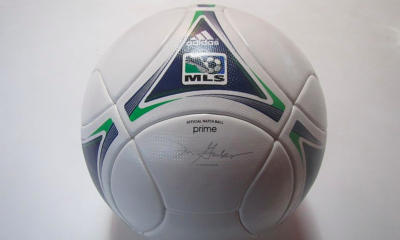
 Football7 months ago
Football7 months agoMeet the World Football Celebrities and Their Stories
-

 Game6 months ago
Game6 months agoThe Ultimate Guide to General Multi-Sport Events
-

 Football7 months ago
Football7 months agoSamuel Eto’o: Legendary Cameroonian Soccer Star’s Career
-

 Football6 months ago
Football6 months agoRonaldo’s Business Ventures and Investments (CR7 Brand)
-

 Wrestling3 months ago
Wrestling3 months agoJey Uso Biography and Net Worth: The Rise of a WWE Superstar
-

 Wrestling4 months ago
Wrestling4 months agoKevin Owens: The Prizefighter’s Rise to Fame and Fortune



